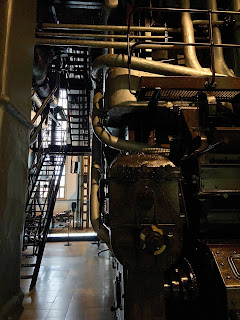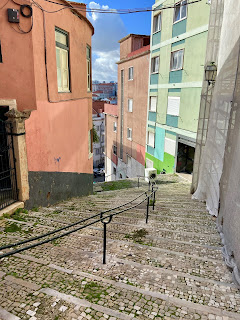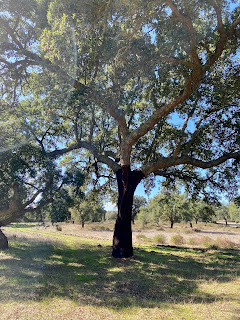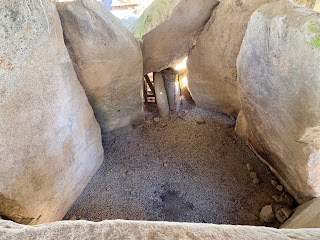It's a week before Thanksgiving. I had a tooth extracted on Monday, and am now stuck in the apartment with a headache and a dull pain in my jaw. I'm not supposed to do any "physical activities", so I've had all day to watch the public hearings for the impeachment investigation in the US House Intelligence Committee. By way of passing some time and processing what I'm seeing, here's a quick little diary of the past few days.
It's Wednesday, November 13; it's the slow build-up. I am taking antibiotics and anti-inflammatories to deal with a cracked tooth and infection. The tooth is super loose, super annoying, and I'm not sure it's going to stay in place all day. My tummy is not happy about the medicines.
In the morning, we watch testimony from Charge D'affair for Ukraine, Captain William Taylor (West Point, Harvard, Bronze Star), and Deputy Assistant Secretary of State, George Kent (Harvard, NDU). These are two sharp, seasoned, well-dressed, and well-prepared foreign affairs professionals. They lay out the timeline and the broad strokes, and describe a forking of US policy towards Ukraine into a "regular channel" and an "irregular channel". They both tolerate and even offer some support to this "irregular channel" while it seems to track the same policy line as the regular channel. But just as Taylor arrives at his post in June 2019, this "irregular channel" begins to fly off the rails, with demands for announcements and investigations in exchange for meetings and foreign aid. By September, Taylor threatens to quit.
“The nightmare is [the Ukrainians] give the interview and don’t get the security assistance. The Russians love it. (And I quit.)” – Taylor, text to US Special Envoy Kurt Volker, September 8Taylor's predecessor is former Ambassador Marie Yovanovitch (Princeton, NDU), and she testifies on Friday. She is the victim of an unexplainable (and unnecessary) smear campaign, orchestrated by players in this "irregular channel", which results in her departure from Ukraine in May. This campaign culminates in her being belittled by President Trump in his July phone call with President Zelensky.
“The former ambassador from the United States, the woman, was bad news and the people she was dealing with in the Ukraine were bad news so I just want to let you know that.” – Trump, Zelensky call transcript, July 25My impressions at the end of the day Friday are: wow, there are some seriously dedicated people in our foreign service. And wow-wow-wow, the people currently leading them are deeply nuts. It's particularly galling that the Republican defense is: the President can do whatever he wants with Ambassadors. On paper, true, but is that how we want to handle the diplomatic corps? the diplomatic corps on the front lines in Ukraine? And why the smear? what is to be gained? If he can just remove her, then do that.
As my dentist tells me: don't wiggle or touch the tooth. It's not something to play with. It'll make the infection and the pain worse. Be patient, take your meds, and we can safely extract it as planned.
During the hearing, President Trump cannot help himself and tweets out more insults. This is captured by Committee Chairman Adam Schiff, who is able to ask Ambassador Yovanovitch in real time about the smears, to which she says simply, "it's very intimidating".
“Everywhere Marie Yovanovitch went turned bad. She started off in Somalia, how did that go? Then fast forward to Ukraine, where the new Ukrainian President spoke unfavorably about her in my second phone call with him.” – Trump tweet, November 15The timeline and the facts are now comprehensible. What is incomprehensible is how Trump and Giuliani are creatures of habit. Their "standard operating procedure" is to smear people because that's how they rule and keep their people in line: by fear and intimidation. It's a zero-sum game; they win when you lose. They don't know any other way. Even if they have a clean and simple route, a one item checklist to remove the Ambassador, they create a mass of innuendos and insults to justify the the removal and further their agenda. They are determined to discredit and clear away people they don't like, and everyone else plays cowering witness – it's mob-style terrorism.
The other thing we all learn is: it's "Keev", not "Kee-ev".
On Monday morning, November 18, I walk down the street to the dentist. The tooth is still in there, but it's really wobbly and uncomfortable, so I'm not necessarily happy about it. Our dentist is a small, dark Portuguese lady with a quick smile. Luckily, her English is passable, but the extraction is a bit rough, and she displays surprising strength in removing a damaged but stubborn molar. She runs the post-procedure care instructions through Google Translate and e-mails them. It's going to be a few days of ice-packs and ibuprofen.
On Tuesday morning, the hearings resume with NSC Director, Lieutenant Colonel Alexander Vindman (Harvard, US Army, Purple Heart), and State Department advisor to the Vice President, Jennifer Williams (Georgetown, Princeton). Again, incredibly competent and well prepared people. Again, Vindman is the target of insulting tweets from the White House; he is a "never-Trumper". The most striking piece of testimony here is an exchange between Vindman and Ranking Member Devin Nunes, who is clearly digging for names and trying to "out" the whistle-blower.
I'm surprised to find myself thinking of the witnesses in terms of “theme and variation”, with Kent-Taylor giving way to Williams-Vindman – an older and younger pair of people in service. I'm thinking that they are time-machine versions of each other, especially as Captain Taylor and Lt Col Vindman both take the seat on the right, both decorated and dedicated.
Tuesday also has an afternoon session with Special Envoy, Kurt Volker (GWU), and NSC Senior Director, Tim Morrison (GWU). These are two witnesses that are requested by the minority, so the themes sound similar but the tone of the hearings definitely changes, like we've shifted to a minor key. However, the tensions soon flip around, as both of these witnesses seem to reinforce the idea of a series of quid pro quo's. Volker revises his earlier deposition and now says there was "conditioning" for a White House meeting saying, "I have learned many things". Equally important, Morrison also confirmed that he was told that the hold on the $400 million in aid to Ukraine was in exchange for investigations.
Tuesday is prelude to Wednesday as all things now seem to point to US Ambassador to the EU, Gordon Sondland, a wealthy businessman who, like Trump, made his fortune in hotels and hospitality. His professional disadvantage at the witness table, that of being a hotelier and not a diplomat, is laid bare. He does not take notes, is not prepared, and his memory and language skills do not belong to a diplomat. He does not understand political nuance and he is trained to charm, not debate. He simply does not have the work practices and experience for this challenge. That said, he does seem smart, able, and personable – he's in hospitality after all. Though he was appointed to his post by Trump after his now infamous million-dollar inauguration donation, he still opens with:
“I know that members of this committee have frequently framed these complicated issues in the form of a simple question: Was there a ‘quid pro quo?. With regard to the requested White House call and White House meeting, the answer is yes.” – Sondland, November 20Sondland's testimony is unexpected for so many reasons, not just the "about-face" from his earlier closed-door deposition, but for the character delivering them. The flow of witness testimony is like a symphony in four movements: from last Wednesday, to Friday, to Tuesday, it is a precise and powerful welling up of well-chosen words, and well-ordered statements. But the payoff, the fourth and final movement, is this Wednesday. It is Sondland, a large, bald, well-dressed man cartoonishly crashing through the percussion section, stepping through the drum heads. He is clearly trying so hard to be charming, and he seems sincere in trying to be a good ambassador, but his vulgar language, his inappropriate laughter, his spotty memory are in stark-stark contrast to all the foreign service professionals: well prepared, decades of service, proper work habits.
And he names names – all the names: the Vice President, the Secretary of State, the Secretary of Energy, the Chief of Staff. Everyone is "in the loop". Clearly he is not going to be left with the short straw, so he's cutting all of them. And he's giggling and cracking wise through the whole thing.
On CNN, a camera crew follows him out to the airport after the hearing as he returns to Brussels. It broadcasts, as background to the talking heads, Sondland joking with the gate agents; they are all having a great good laugh. He's showing them something on his iPhone. That iPhone may soon become infamous, too.
In a way, it seems that his "amateur status" is exactly how and why Trump is able to manipulate him and arrange his back-room deals. He is a CEO from central casting: sharp, demanding, a bit self-important, but able to get things done quickly and with a smile. But it's also why he is now trumpeting not only his actions, but the actions of others. He likes being seen in the middle of things. He's creating a cacophony, and seems to be enjoying it. He appears oblivious to the awful, awful mess he's making.
For example, Holmes takes us to an outdoor cafe in Kiev with Sondland making his call to Trump. He describes the terrace and the open glass doors. He is seated across from Sondland, sharing wine and appetizers, and is able to overhear the phone conversation, acting out Sondland's physical responses and expressions. Hill takes us into a meeting with National Security Advisor John Bolton. We see the seating arrangements, understand the structure of the discussion items. We watch Bolton's posture and troubled reaction when Sondland inserts himself at the end of the meeting. Hill also point-blank shoots down the idea that Ukraine had anything to do with meddling in the 2016 US election. Her short but strong opening statement is, maybe, the most compelling thing to come out of this entire investigation.
Soon, the Republicans realize they really should not direct questions to these two witnesses, and begin monologuing during their time. They get a lot of reactions from the audience, though, and more than one expression of frustration from Holmes. It's a shame that the minority members are leaving, as Hill points while trying to respond to one diatribe, as the stories really have important lessons about how our government's words and actions seriously impact other countries.
So, one huge take-way is that our foreign service people are way under-appreciated. The bureaucrats in the deep state turn out to be some decorated veterans, some immigrants, and some quite tall people; all with impeccable training and CVs. It goes a long way to restoring some faith in "our American government" even as our institutions are under attack from Trump and his minions. Watching the pros answer their Republican questioners, especially Nunes, Jordan, and Stefanik, is an education. Pros take notes, organize their testimony, deliver clear responses, and are immune from "gotcha" questions.
How people playing at government, like Sondland or Giuliani or Trump, are tolerated and given guidance by the dedicated people in foreign service is astonishing, even touching. These career staffers are trying, to the best of their abilities, to keep these dilettantes on the same page. Way beyond professional courtesy, it is a patriotic generosity of spirit, and is spot-lighted when Dr Hill responds to Rep (Dr) Wenstrup (video embedded below). But it seems the dilettantes can only be tolerated to a point, and then the pros feel they need to pause things and explain the damage. This is why these witnesses are giving their testimony against the orders of the President. Thus the tragedy of this metaphor is that the conductor is a dilettante, too, and unquestionably the very worst one.
Let me add before closing that while Hill and Holmes do seem to be the most relatable, they have the advantage of being able to add up all the other testimony – two plus two equals four, as Sondland says. As the last pair, they hear the other evidence, understand the power of the narrative, and decide how best to deliver the message. I suspect any of these witnesses would have done that math properly, unlike Sondland, because that's what they are all trained to do: analyze and explain. The larger story is now clearer to them, and they make it very clear to me.
What's also now clear is that we are headed for an impeachment. After Sondland's "quid pro quo, yes" testimony, there really can be no other outcome for the House Democrats. Like a bad tooth, the extraction is sharp and uncomfortable, the healing very slow and painful. But you got to do it.
“When we are consumed by partisan rancor, we cannot combat these external forces as they seek to divide us against each another, degrade our institutions, and destroy the faith of the American people in our democracy.” – Hill, opening statement, November 21
"Kardashians, A$AP Rocky and four-letter words: The impeachment inquiry clearly reflects the Trump era", by Kevin Liptak, CNN
"Seven hours in the air with Sondland after he implicated Trump in his impeachment testimony", Zachary Cohen, CNN

































































